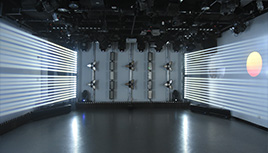Maintenance Tips for Prolonging the Life of Your LED Stage Lights Innovative Maintenance Strategies
2025-02-03 Post By: Longmangroup
Innovative Maintenance Strategies to Extend the Lifespan of LED Stage LightsLED stage lights have revolutionized the entertainment industry with their energy efficiency and extended lifespan. However, to fully capitalize on these benefits, it's essential to implement innovative maintenance practices that not only preserve the equipment but also enhance its performance.
1. Advanced Cleaning Techniques
Regular cleaning is paramount to prevent dust and debris accumulation, which can impair light output and cause overheating. Utilizing specialized cleaning solutions and tools designed for LED fixtures ensures effective maintenance without damaging sensitive components. For instance, using a soft, lint-free cloth dampened with a mild cleaning solution can gently wipe down the external surfaces of the fixture, including the housing, lenses, and control panel.
2. Optimal Storage Solutions
Proper storage conditions significantly influence the longevity of LED stage lights. Implementing climate-controlled storage environments with regulated temperature and humidity levels can prevent moisture-related damage and component degradation. Additionally, using protective covers or cases shields the equipment from environmental contaminants and physical impacts during storage.
3. Scheduled Software Updates
Keeping the firmware of LED stage lights up to date is crucial for optimal functionality and compatibility with other equipment. Regularly updating the fixture’s software can address bug fixes, performance enhancements, and feature additions, ensuring the lighting system operates efficiently.
4. Enhanced Ventilation Systems
Overheating is a common issue that can shorten the lifespan of LED fixtures. Integrating advanced cooling solutions, such as high-efficiency fans or heat sinks, can improve heat dissipation. Ensuring that all vents are free of obstructions and that the fixtures are placed in well-ventilated areas can significantly reduce the risk of thermal damage.
5. Utilization of Smart Monitoring Tools
Implementing smart monitoring systems that provide real-time data on the performance and health of LED stage lights can facilitate proactive maintenance. These systems can alert technicians to potential issues, such as overheating or component wear, allowing for timely interventions that prevent equipment failure.
6. Professional Training and Certification
Investing in professional development for technicians ensures that maintenance procedures are carried out correctly and efficiently. Attending manufacturer-led workshops or obtaining industry-recognized certifications can enhance the technician’s understanding of the cleaning and maintenance procedures, leading to better care of the equipment.
Maintaining and prolonging the lifespan of various stage lighting fixtures—such as moving head lights, par lights, wash lights, gobo lights, profile lights, and ellipsoidal lights—requires specific care tailored to each type. Below are detailed maintenance steps and considerations for each fixture type, along with performance enhancement data where available.
1. Moving Head Lights
Maintenance Steps:
- Regular Cleaning: Dust and debris can impair movement and light output. Use a soft, lint-free cloth to clean the exterior and a gentle brush for internal components.
- Lubrication: Apply appropriate lubricants to moving parts to ensure smooth operation and prevent wear.
- Firmware Updates: Regularly update the software to benefit from performance improvements and new features.
- Lens and Optical Components: Dust, smoke, and debris can accumulate on lenses, sensors, and moving parts, obstructing light output and decreasing lifespan. Regularly clean all surfaces with a soft, dry cloth.
- Moving Parts: Apply appropriate lubricants to moving parts to ensure smooth operation. Refer to the manufacturer's guidelines for specific lubrication requirements.
- Frequency: Lubricate all moving parts, including the yoke, pan, and tilt mechanisms, to prevent premature wear. Follow the manufacturer’s recommendations for the type of lubricant and frequency of lubrication.
- Loose Connections: Regularly check for loose connections and signs of wear. Tighten any loose screws and replace worn components promptly.
- Electrical Components: Inspect the electrical wiring of your moving head lights to ensure they are intact and secure. Loose connections or damaged cables can lead to malfunction or even electrical fires.
- Air Filters: Dust and debris can easily penetrate the intake vents of moving head lights. Replacing air filters regularly is essential to prevent the accumulation of contaminants that can clog cooling fans and damage internal components.
- Software Maintenance: Manufacturers often release firmware updates that address bugs and improve performance. Installing the latest firmware updates can enhance the functionality and lifespan of your fixtures.
- Proper Storage: Store your moving head lights in a dry, temperature-controlled environment to prevent moisture damage. Use shock-absorbing materials to protect the lights from vibrations and impact.
- Transportation: During transportation, secure the lights in their cases or flight cases to prevent movement and vibration.
- Avoid Overheating: Ensure that the ambient temperature does not exceed 45°C. If it does, suspend use to allow the lamps to cool. Operating at high temperatures can affect the service life of LED products.
- Electrical Safety: Use the appropriate circuit to guarantee the normal operation of stage lights. If the power supply current and voltage are insufficient, it may affect the light's luminous quantity and effect.
Proper maintenance can reduce mechanical failures and maintain consistent light output, ensuring reliability during performances.
2. Par Lights
Maintenance Steps:
- Lens Cleaning: Regularly clean lenses to prevent light distortion. Use specialized lens cleaning paper and solutions to gently wipe the lens.
- Electrical Checks: Inspect cables and connectors for wear or damage to prevent electrical issues.
- Storage: Store in a dry, dust-free environment to prevent internal component degradation.
Maintaining clean lenses and secure electrical connections ensures optimal light output and color accuracy.
3. Wash Lights
Maintenance Steps:
- Reflector Inspection: Check reflectors for cleanliness and alignment to ensure uniform light distribution.
- Fan Functionality: Ensure cooling fans are operational to prevent overheating.
- Color Filter Care: Regularly inspect and clean color filters to maintain color consistency.
Proper maintenance of reflectors and cooling systems prevents overheating, which can lead to color shifts and reduced light output.
4. Gobo Lights
Maintenance Steps:
- Gobo Wheel Cleaning: Regularly clean gobo wheels to prevent image distortion.
- Optical Alignment: Ensure optical components are correctly aligned for sharp projections.
- Heat Management: Monitor and maintain proper operating temperatures to prevent gobo degradation.
Maintaining clean gobo wheels and proper alignment ensures crisp, clear projections without distortion.
5. Profile Lights
Maintenance Steps:
- Lens and Mirror Cleaning: Regularly clean lenses and mirrors to maintain sharp focus.
- Shutter Mechanism Inspection: Check shutters for smooth operation and proper alignment.
- Cooling System Check: Ensure fans and heat sinks are functioning to prevent overheating.
Proper maintenance of optical components and cooling systems ensures sharp focus and prevents overheating, which can lead to color shifts and reduced light output.
6. Ellipsoidal Lights
Maintenance Steps:
- Lens Cleaning: Regularly clean lenses to prevent light distortion.
- Shutter and Iris Functionality: Ensure shutters and iris mechanisms operate smoothly for precise beam control.
- Electrical Inspections: Check wiring and connectors for wear or damage to prevent electrical issues.
Maintaining clean lenses and functional beam control mechanisms ensures precise and consistent light output.
General Maintenance Tips:
- Avoid Frequent Switching: Minimize turning lights on and off to reduce stress on electronic components.
- Proper Storage: Store lights in a dry, dust-free environment to prevent internal component degradation.
- Regular Inspections: Conduct routine checks to identify and address potential issues before they affect performance.














